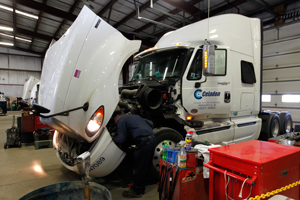Proper maintenance saves fuel. That was the key finding in the North American Council for Freight Efficiency’s latest Trucking Efficiency Confidence Report covering maintenance, the group said in releasing the report.
The report recommended that, although still uncommon, fleets should think of maintenance in terms of the fuel-economy benefits it offers.
“Adding up all of the potential reductions in fuel economy covered under the 10 components described in the report shows that maintenance can, in fact, address 30% to 50% of fuel consumption. Certainly, no truck will ever have problems with all 10 of these components at once, but the massive size of that figure is indicative of just how significant the opportunity is to use maintenance to improve fuel efficiency.”
Also, the report noted that while the industry today is aware of the impact of poor maintenance on fuel economy, it is nevertheless uncomfortable quantifying what the link between the two might be in order to justify investing in improvement.
The report furthermore identifies the separate components or vehicle systems that are known to impact fuel economy and looks at the role of maintenance in keeping those components/systems operating at peak condition, NACFE said.
The following 10 major components or systems were most often mentioned by the fleets and are therefore discussed in depth in the report, but this list is not exhaustive.
1. Lubricants/Engine Oil; 2. Intake/Exhaust System and Diesel Particulate Filters; 3. Engine Cooling; 4. Air Compressors; 5. Wheel Alignment; 6. Tires; 7. Fuel Filter Systems; 8. Aerodynamic Devices; 9. Electrical Systems; 10. Air Conditioning.
The report found some fleets still view maintenance as a cost, making cuts to the maintenance budget during tough economic times.


